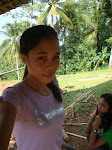1. Who argued for a highly active and individualized pedagogical methods which place the student at the center of the teaching-learning process?
Answer:
John Dewey argued for a highly active and individualized pedagogical methods which place the student at the center of the teaching-learning process.
2. Describe a traditional classroom. (You may embed pictures or videos.)
Answer:
Based on John Dewey's idea that a traditional classroom is like pouring water from a jug into cups, traditional classroom performs a learning process in which the teacher pours information to student learners. The classroom setting is usually arranged with neat columns and rows of chairs while the teacher stands in front or sits behind her desk reading the texts contain in the book in front of the class. Though it maintains classroom discipline and convenience for the teacher in controlling the classroom, it is still not the precise way because after spending so many minutes, the student learner's attention is no longer focusing on the teacher due to boredom, restlessness, tiredness and drowsiness. The student learners remain as passive recipients of information given by their teacher and viceversa , the teacher is considered as the sole provider of information.
3. Describe an SCL classroom. (You may embed pictures and videos.)
Answer:
Student Centered learning classroom is a setting which performs the learning process with the help of I CT's and educational theory such as constructivism and cooperative learning. Desiring to gain effectiveness, efficiency and economy in administration and instruction is the basis of having this type of approach. The student learners do not remain passive recipients of information instead, they now become active learners who can interact with other learners and demonstrate independence and self-awareness in the learning process. Generally, there is a departure from traditional instruction and an arrival of a more flexible and constructive way of classroom instruction. Though it's modernizing the way of teaching but still the teacher is and will always be the facilitator,hence, he or she is irreplaceable.
Wednesday, September 8, 2010
Learning Task 3
Posted by Malyn Tutor Amora at 7:44 PM 0 comments
Monday, September 6, 2010
Learning Task 2
1. Who introduced constructivism?
Answer:
Constructivism is introduced by Piaget(1981) and Bruner(1990).
2. This is an effort to show that the construction of knowledge is governed by social, historical and
cultural contexts.
Answer:
Social constructivism is an effort to show that the construction of knowledge is governed by social, historical and cultural contexts.
3. Who stressed that learning is affected by social influences?
Answer:
A psychologist named Vygotsky stressed that learning is affected by social influences.
4. Give the five ways on how the teacher can employ the computer and discuss each.
Answer:
As an Informative tool
The computer provides huge amount of information in various ways such as text. graphics, sound and video.Trough internet, computer can provide enormous database from which users can access global and updated information resources namely latest news, weather forecast, sports development and even educational information for today's learners.Computers with an internet connection can be an educational resource, through Internet In Education.
As a Communication tool
Computers serve as an informative tool not just in downloading relevant information but also in the composition of a presentation project on a certain subject as may be assigned by teacher. Internet can be a channel for global communication, thus, the computer can very well be the key tool for video teleconferencing sessions.
As a Constructive tool
The computer itself can be used for manipulating information, visualizing one's understanding and building new knowledge. For an instance, MS computer program itself is a desktop publishing software that allows users to construct and organize, then present their ideas in attractive formats.
As a Co-constructive tool
Learners can use constructive tools to work cooperatively and construct a
shared understanding of new knowledge. One use of co-construction is the use of electronic whiteboards where students may posts notices to a shared document and it can even be edited at home.
As Situating tool
Through virtual reality (RS) extension systems, the computer can create 3-D images on display to give the user a virtual environment feeling. A flight simulation program is an example of situating tool which places the user in a simulated flight environment.
Multi-User Domains, MUD Object-oriented and Multi-User Shared hallucination are examples of situating systems.
Posted by Malyn Tutor Amora at 8:33 PM 0 comments
